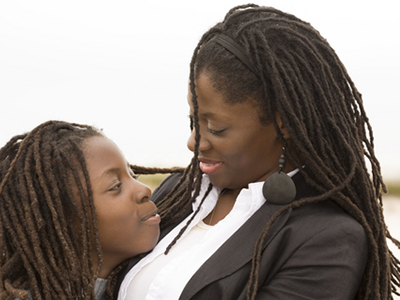WAYS TO HELP YOUR KIDS UNDERSTAND THEIR FEELINGS AND COMMUNICATE BETTER

There’s a principle in psychology that the mere act of acknowledging a person’s feelings can help bring about powerful relief. This is especially true of kids. But more often as parents our instinct is to try to correct or fix a feeling a child is expressing.
In early childhood is when children begin developing their social and emotional skills, which influences their mental health and wellbeing, now and in the future.
These skills are important for children’s developing ability to interact successfully with others and their physical world.
Children, who can understand and manage their feelings, stay calm and enjoy their experiences, are more likely to develop a positive sense of self. Perhaps these tactics will help you get your child understand their feelings better and most importantly communicate better:
1. Encourage your child to use words to express their feelings
The first step in acknowledging any problem, from a bath-time breakdown to a supermarket meltdown, is to build up your child’s vocabulary of “feeling” words. So, when your kid is hulking out because you put their juice in the wrong colored cup, the first thing you need to do is grit your teeth and resist the urge of contradicting your child (even if your brain is screaming at them to just drink the damn juice!).
Then, think about the emotion they’re feeling, name it, and put it in a sentence. For example –Frustrated. Ask your child. ” Are you feeling frustrated because you don’t have your blue cup? Child experts say that that when your child can say, ‘I am frustrated!’ instead of ratcheting up to a tantrum, you know you’re on the right track.
2. Acknowledge your child’s feelings with writing
If kids can’t read, seeing their feelings and desires written out can be very powerful, when a child takes a tantrum over something that you don’t have. You can say ‘Let’s write it down on our shopping list so we can get it.’” Why? Because writing it down shows a child that you’re really taking this seriously.
3. Get into the habit of labeling the feelings you believe your child is experiencing
For example, if your child runs up to you and hugs you as you walk through the door, you can say something like “someone is excited to see me” or “someone is happy I’m home.” Labeling your child’s feelings as they happen helps them to build their feelings vocabulary.
4. Be a role model for your child – show them that having difficult feelings is part of everyday life and show them how to deal with them (e.g., “I’m feeling really tired and I think I need to have an early night.”). Model appropriate ways to express feelings to your child. Children are always watching us and like sponges they soak everything up. Good and bad. If your child sees you expressing your feelings in a positive way, over time they learn to do the same. However, if they see you yelling and throwing things when you get upset, they are more likely to mimic this behavior. Make talking to your child about feelings a normal part of every day.
5. Encourage your child to express his or her emotions in healthy ways, such as talking about sad feelings or saying why they may be feeling angry and helping them to become calm (e.g., by being still for a few moments) and move on to more pleasant activities.
6. Be as warm, caring and responsive towards your child as you can – children learn to recognize your usual way of responding which is built up over many interactions so it’s important to keep in mind that you don’t have to be perfect all of the time.
7. Remember that children are affected by the feelings, behaviors, and interactions of others – it’s important to monitor your own wellbeing and ask for help and support when you need it so that you have the energy to be there for your children including showing ‘feel good’ emotions such as happiness, joy, enthusiasm and excitement.
8. Use Stories When you read to your child, discuss how the characters in the story are feeling. Point out any clues that lets you know what they are feeling such as facial expressions or behaviors. Then explain to your child why the characters feel the way they do. If your child is able to, let them take a turn identifying how the characters are feeling and why.

9. Encourage Empathy When your child does something that upsets someone else, let them know how their behavior might make others feel. For example, “When you called your sister names, she felt sad and her feelings were hurt. “ This will help your child be mindful of what they say and do to others. You can follow up by asking how they would feel if someone did the same thing to them.
10. Praise your child when they use words to express their feelings. Having the self-control to express your feelings appropriately is no easy feat. There are many adults who are unable to do this. When your child tells you how they are feeling instead of having a complete melt down, praise them for doing so. Be very specific. For example, “I like how you told your sister that you were sad when she called you names. That was very mature of you.” Praising your child for practicing good behavior makes them more likely to do it again in the future. It also lets them know that you are watching them and notice when they do good things.

Being able to recognize, express and manage a wide range of emotions in themselves and others benefits children’s mental health and wellbeing. Caregivers can help children learn about feelings and how to manage them effectively. Encouraging your child to put themselves in someone else’s shoe teaches them how to be empathetic. Empathy is an important life skill that will allow your child to maintain positive relationships with other people.
